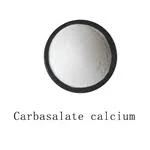- Afrikaans
- Albanian
- Amharic
- Arabic
- Armenian
- Azerbaijani
- Basque
- Belarusian
- Bengali
- Bosnian
- Bulgarian
- Catalan
- Cebuano
- Corsican
- Croatian
- Czech
- Danish
- Dutch
- English
- Esperanto
- Estonian
- Finnish
- French
- Frisian
- Galician
- Georgian
- German
- Greek
- Gujarati
- Haitian Creole
- hausa
- hawaiian
- Hebrew
- Hindi
- Miao
- Hungarian
- Icelandic
- igbo
- Indonesian
- irish
- Italian
- Japanese
- Javanese
- Kannada
- kazakh
- Khmer
- Rwandese
- Korean
- Kurdish
- Kyrgyz
- Lao
- Latin
- Latvian
- Lithuanian
- Luxembourgish
- Macedonian
- Malgashi
- Malay
- Malayalam
- Maltese
- Maori
- Marathi
- Mongolian
- Myanmar
- Nepali
- Norwegian
- Norwegian
- Occitan
- Pashto
- Persian
- Polish
- Portuguese
- Punjabi
- Romanian
- Russian
- Samoan
- Scottish Gaelic
- Serbian
- Sesotho
- Shona
- Sindhi
- Sinhala
- Slovak
- Slovenian
- Somali
- Spanish
- Sundanese
- Swahili
- Swedish
- Tagalog
- Tajik
- Tamil
- Tatar
- Telugu
- Thai
- Turkish
- Turkmen
- Ukrainian
- Urdu
- Uighur
- Uzbek
- Vietnamese
- Welsh
- Bantu
- Yiddish
- Yoruba
- Zulu
Dec . 10, 2024 16:35 Back to list
Ivermectin Injection Dosage Guidelines for Swine Health Management
Ivermectin Injection Dosage for Pigs A Comprehensive Guide
Ivermectin is a widely used antiparasitic medication, renowned for its effectiveness in treating a variety of parasitic infections in both animals and humans. Among livestock, pigs are particularly susceptible to numerous parasites, making the appropriate use of ivermectin critical for their health and productivity. In this article, we will delve into the recommended dosages, administration methods, and considerations for using ivermectin injections in pigs.
Understanding Ivermectin
Ivermectin is an avermectin, a class of drugs derived from the fermentation of the soil bacterium Streptomyces avermitilis. It works by targeting the nervous system of parasites, leading to paralysis and death. This makes it effective against a wide range of parasites, including roundworms, lice, mites, and some external parasites.
Dosage Guidelines
The dosage of ivermectin for pigs varies depending on the specific product and the type of parasites being targeted. Typically, the recommended dosage for pigs ranges from 200 to 300 micrograms per kilogram (mcg/kg) of body weight when administered as an injection. This means
- For a pig weighing 50 kg, the total dosage would be between 10 mg and 15 mg of ivermectin. - For larger pigs weighing around 100 kg, the dosage would be between 20 mg and 30 mg.
It is essential to note that the drug’s concentration (measured in mg/mL) in the injectable solution will determine the volume to be administered. Therefore, always check the label for specific concentrations before administration.
Administration Method
Ivermectin can be administered through subcutaneous (under the skin) or intramuscular (into the muscle) injections. The subcutaneous route is often preferred due to lower stress on the animal and easier administration. When administering the injection, follow these steps
1. Prepare the Injection Site Choose an area on the neck or behind the shoulder. Clean the injection site with an antiseptic solution to minimize the risk of infection.
ivermectin injection dosage for pigs

2. Draw the Correct Dose Using a sterile syringe and needle, draw the calculated dose of ivermectin from the vial.
3. Administer the Injection Insert the needle at a 45-degree angle and inject the medication slowly to minimize discomfort.
4. Safety Precautions It is advisable to observe the pig post-injection for any adverse reactions or signs of distress.
Considerations and Precautions
While ivermectin is generally safe, certain considerations must be taken into account
- Weight Estimation Accurately estimating the weight of pigs is crucial for proper dosing. Under-dosing can lead to treatment failure, while overdosing can result in toxicity.
- Withdrawal Period There is a withdrawal period for ivermectin use before pigs can be slaughtered for meat, typically ranging from 14 to 35 days, depending on regulations in your region. Always consult local guidelines to ensure compliance.
- Veterinary Consultation It is advisable to seek guidance from a veterinarian before administering ivermectin, especially if the pig is pregnant, lactating, or has existing health issues.
- Monitor for Efficacy After treatment, monitor the pigs for signs of improvement or persistent parasitic infections. A follow-up treatment may be necessary based on the parasite load.
Conclusion
Ivermectin is a potent tool in managing parasitic infections in pigs, contributing to their overall health and productivity. Proper dosage and administration are vital to ensuring the effectiveness of the treatment while minimizing risks. Always consult a veterinarian for the best practices tailored to specific situations and to maintain the well-being of your herd. By adhering to these guidelines, livestock owners can effectively protect their pigs from parasitic threats, ensuring healthier and more productive animals.
-
Guide to Oxytetracycline Injection
NewsMar.27,2025
-
Guide to Colistin Sulphate
NewsMar.27,2025
-
Gentamicin Sulfate: Uses, Price, And Key Information
NewsMar.27,2025
-
Enrofloxacin Injection: Uses, Price, And Supplier Information
NewsMar.27,2025
-
Dexamethasone Sodium Phosphate Injection: Uses, Price, And Key Information
NewsMar.27,2025
-
Albendazole Tablet: Uses, Dosage, Cost, And Key Information
NewsMar.27,2025













